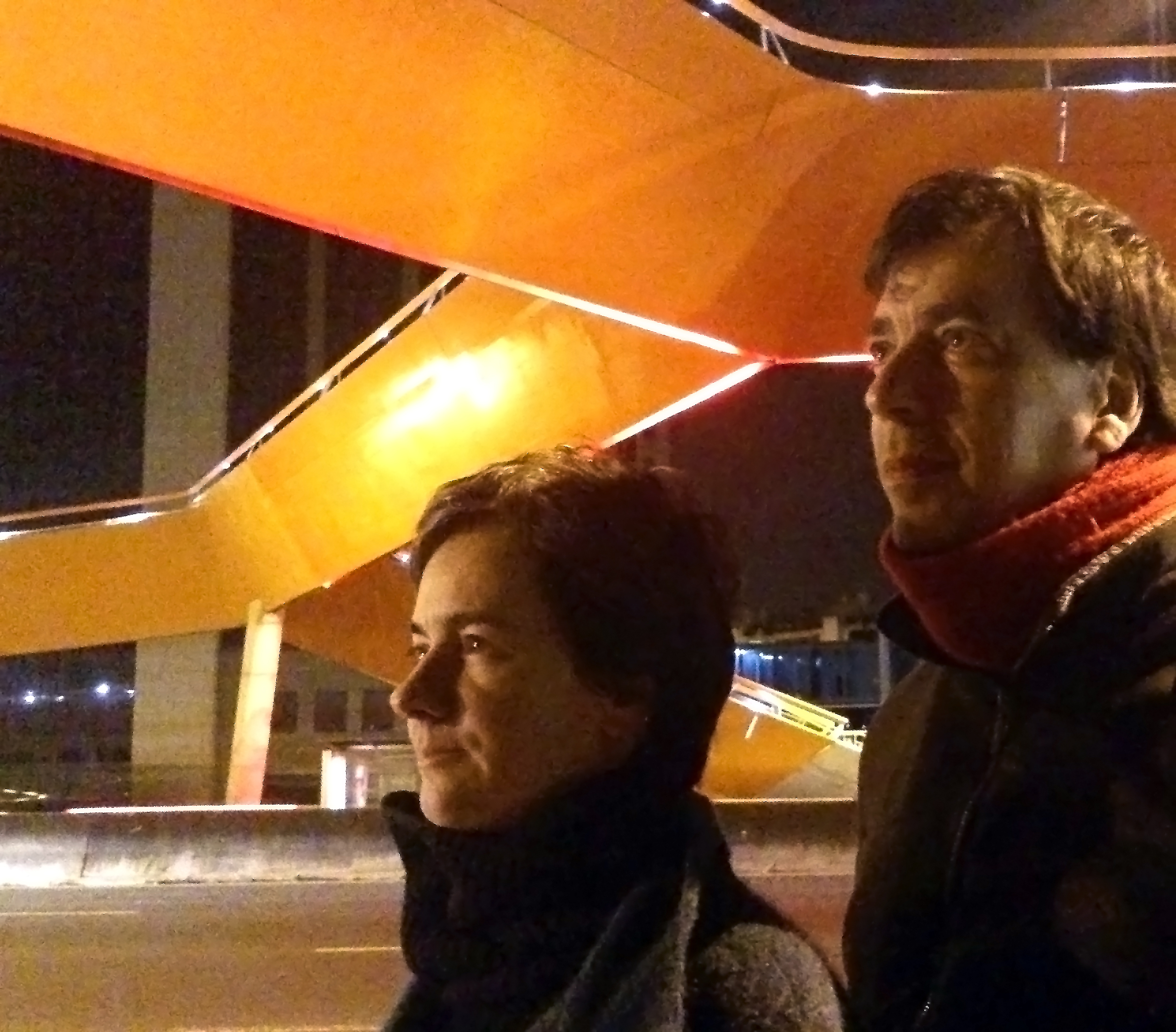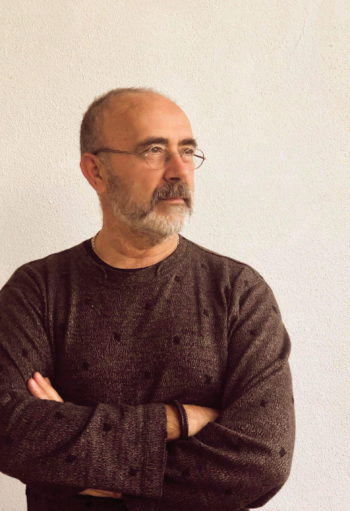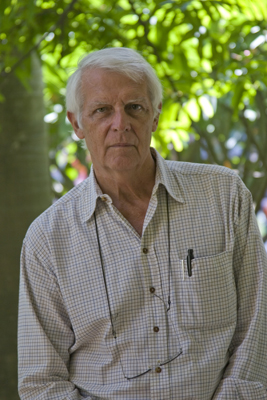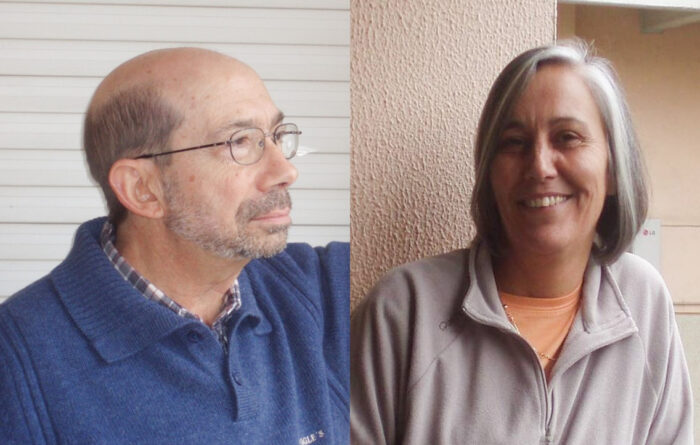A conversation with Arch. Telmo Cruz and Arch. Maximina Almeida

A conversation with Arch. Telmo Cruz and Arch. Maximina Almeida
'When architects manage to correctly do the exercise of building a city, this is valuable by itself. We feel great in the city. ’
Tell us about your academic path, your own characteristics and how does MXTStudio came about.
Maximina Almeida: I had a great taste for Geometria Descritiva [classes about geometry and planimetry] and thought that I could become a teacher of that subject. The Architecture course was one of those that would allow me to teach, so I ended up getting it, for that purpose. During the course, as we had a lot of group work, it was almost inevitable to bond with classmates. I started to enjoy working with Telmo and at the end of the course, around the 90s, we decided to create our studio, still without the name MXTStudio, which emerged when we won the first tender. Telmo is an excellent leader, is very organized and passes this systematization on to customers and the work team. His resilience and ability to move things forward is very important.
Telmo Cruz: In my case, it was a television program that inspired me. When I was about 14 years old, I saw a program, on RTP2, about Le Corbusier and decided that I wanted to be an architect. The decision was made with great determination. The high school in Seia had no Geometry so I had to go to Coimbra. Maximina makes very sharp criticisms of the processes and, often, the projects take unexpected conceptual leaps due to it. Regarding the 2º Circular bridge, what was built, which was the one we took to tender, is the second version of the project. There was a time when critics showed a lot of other paths, we abandoned the initial ideas and moved in that direction.
What characterizes the studio?
T.C.: We try to be very pragmatic, to understand from the beginning what is really important. The project exercise is quite exhausting, due to a large number of stakeholders, especially in projects inserted in the city, which are the ones that attract us the most. Intervention in the city is very complex since the cities speak: through infrastructures, people, associations, politicians … There are a huge number of agents and not always sufficiently articulated, due to conflicting interests. So when architects manage to do the city building exercise correctly, that is valuable by itself. It is not just the search for the exceptional object. Infrastructures, for example, are like veins that support everything else. Above all, we feel very good in the city, and knowing that the urban world is the material we deal with, is the enthusiasm of all projects.
M.A.: We also have a great capacity to make partnerships, depending on the size, complexity, or deadlines of the work. This ability to aggregate other entities guarantees us the necessary skills to carry out each project. And it allows us to do research outside the standard solutions, in other words, the partnerships vary, not only with other studios but also with other technical specialties. In the Centro Náutico de Abrantes building, a project developed with BETAR, which was a tender that we also won, we adopted a constructive system with resin and fibers technology, which guaranteed us a singular project. It was a material that would make the building very effective and the lightest in the country. – The challenge of eng. Miguel was to prevent him from flying away… – This work ended up not being built, since the City Hall didn’t have the financial resources, but this search for new things is part of our way of acting.
They are also dedicated to equipment design. What does it consist of?
T.C.: The design of equipment arises when we feel that there are no solutions available in the industry for the different situations we face. When we don’t find in the market what we need to solve the problems, we evaluate the resources, call the partners and create the products. The luminaires on the 2º Circular bridge, for example, were designed by us, in partnership with a lighting company.
M.A.: The water fountain outside the Mercado da Comenda is another example. There was nothing that suited the project, so we created it. Not to mention the building itself, which is made of wood, and which was built, with the collaboration of eng. Miguel Villar, before the majority of the wooden buildings that exist today; the Kyoto Protocol was not yet signed. In this case, the main issue was how to insert a new building without visually and culturally breaking the site? We wanted a light building, and wood was the best solution, even more, because there were not many other resources in the area.
What is your opinion about the current state of education and architecture in Portugal?
M.A.: When we were students, there were only two public universities and 200 places for architecture. In 1986, private colleges began to appear, which created more opportunities. Later, many private universities closed, due to lack of quality, and nowadays they are closing due to students’ shortage. In Autónoma University, where Telmo teaches, there were always two classes and now there is only one. At Lusíada University, where I teach, which covers a very wide area, the course has been reduced to two classes. Regarding the labor market, if everything that is architectural work was performed by architects, and everyone had the economic and cultural capacity to hire architects, I think there would be work for everyone. People do not value the architects’ work from a financial point of view, as they do with lawyers, nor are they aware of the time it takes to make a correct decision.
T.C.: But also, if the current number of architects expressed an appreciation of architecture and territory, the work to be done would require more architects. There has been no ability to express the message that architecture is a resource and a value. Projects must always be distinct and there should be an architectural strategy for Portuguese territory. In Switzerland, the standard of living is four times higher but for construction is ten times higher. Why is there this overvaluation? Because they realize that there are many advantages, for the community, in having a competent architectural park and calling the right people to solve the right problems. Here everything is much more open to improvisation and the ability to solve punctual issues. And there is no long-term vision that promotes a well-articulated path to architecture. Regarding teaching, the students’ profile has also changed. At our time, the average grades were very high and, for better or for worse, the students who entered had work discipline and qualifications, because they worked hard to achieve it. Things are different today.
This interview is part of the Artes & Letras Magazine # 62, March 2015
Partially automatic translation from portuguese: some expressions may differ from their actual meaning.
News & Interviews
A conversation with Arch. Alberto Caetano
‘One of the most important things for an architect is […] to get a sense of the history of architecture, because if there is Corbusier, Mies and Siza, it is because there were Miguel Ângelo, Bramante and Borromini’ Read more
A conversation with Arch. José Forjaz
'I am an internationalist. Only like that we can be consistent with a society that we want closely integrated. I feel like an architect. I think our homeland is where we work. ’ Read more
A conversation with Arch. Maria João Carvalhão Duarte and Arch. Alfredo Saldanha
’We do everything: the bureaucratic part, mail, copies, run errands, decipher incompatible legislation. We aren't always fulfilling top functions!’ Read more




